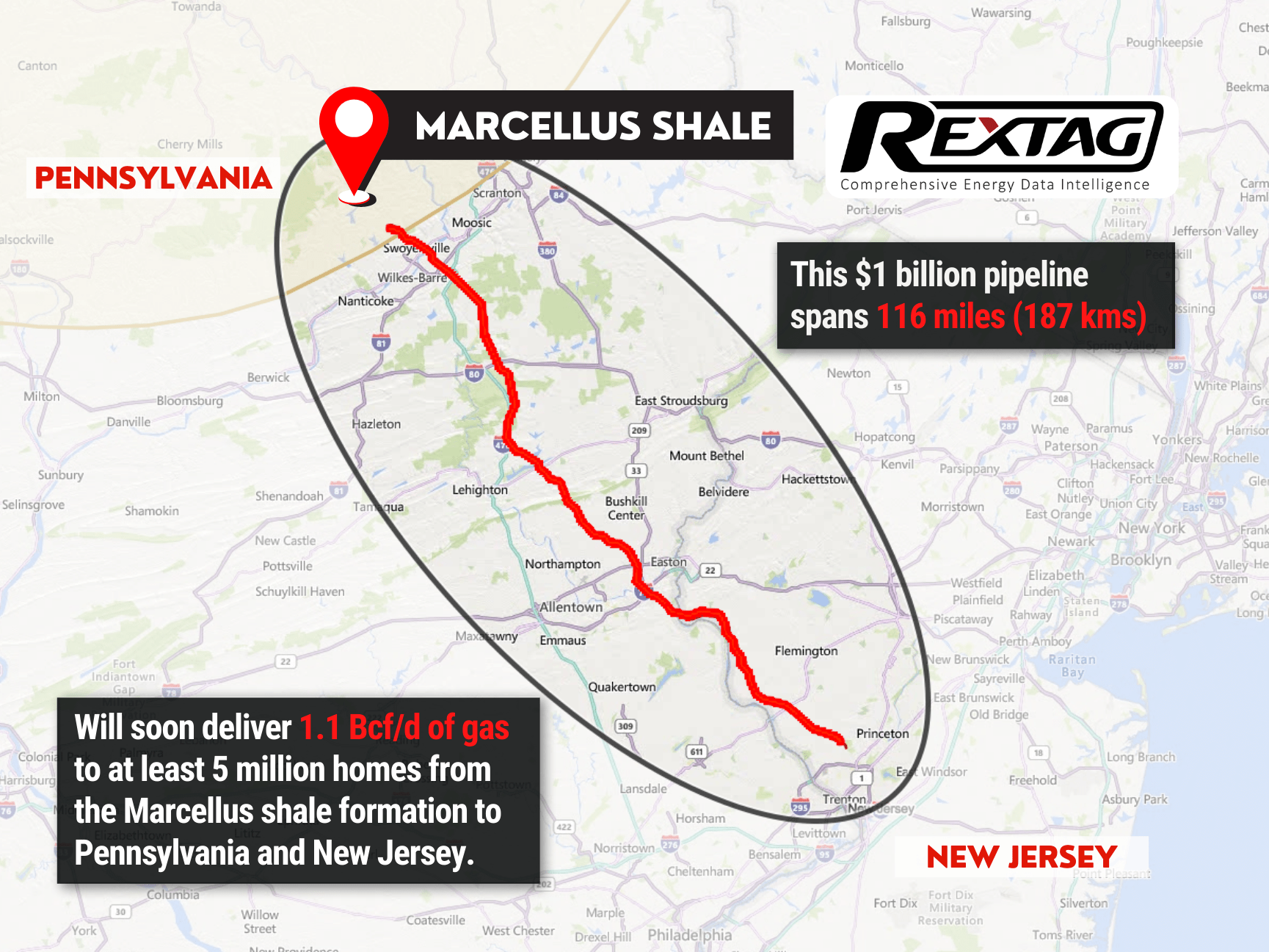Comprehensive Energy Data Intelligence
Information About Energy Companies, Their Assets, Market Deals, Industry Documents and More...
Supreme Court Backs PennEast Pipeline in NJ Challenge
08/13/2021
The U.S. Supreme Court on June 29 ruled in favor of a consortium of energy companies including Enbridge Inc. seeking to seize land owned by New Jersey to build a federally approved natural gas pipeline despite the state’s objections, though hurdles remain for the $1 billion project.
The 5-4 ruling, authored by conservative Chief Justice John Roberts, handed a victory to PennEast Pipeline Co. LLC, a joint venture seeking to build the 116-mile (187-km) pipeline from Pennsylvania to New Jersey. The justices overturned a lower court ruling in favor of New Jersey’s government.
The decision enables interstate pipelines to move forward with efforts to seize state-owned lands without a state's consent as long as federal regulators have approved the project. But New Jersey Attorney General Gurbir Grewal said the ruling does not bring an end to the state’s fight against the PennEast project.
PennEast wants the land to build a pipeline designed to deliver 1.1 Bcf/d of gas—enough to supply about 5 million homes—from the Marcellus shale formation in Pennsylvania to customers in Pennsylvania and New Jersey.
The court ruled that a 1938 U.S. law called the Natural Gas Act that lets private energy companies seize “necessary” parcels of land for a project if they have obtained a certificate from the Federal Energy Regulatory Commission (FERC) can be applied to state-owned land. The law effectively gives private companies the power of eminent domain in which government entities can take property in return for compensation.
FERC in 2018 approved PennEast’s request to build the pipeline. The company then sued to gain access to properties along the route. New Jersey did not consent to PennEast’s seizure of properties that the state owns or in which it has an interest.
After a federal judge approved the property seizure, the Philadelphia-based 3rd U.S. Circuit Court of Appeals ruled in 2019 that PennEast could not use federal eminent domain to condemn land controlled by the state, prompting the appeal to the Supreme Court.
If you are looking for more information about energy companies, their assets, and energy deals, please, contact our sales office mapping@hartenergy.com, Tel. 619-349-4970 or SCHEDULE A DEMO to learn how Rextag can help you leverage energy data for your business.
Why Are Oil Giants Backing Away from Green Energy: Exxon Mobil, BP, Shell and more
![$data['article']['post_image_alt']](https://images2.rextag.com/public/blog/328_Blog_Why Are Oil Giants Backing Away from Green Energy Exxon Mobil, BP, Shell and more .jpg)
As world leaders gather at the COP29 climate summit, a surprising trend is emerging: some of the biggest oil companies are scaling back their renewable energy efforts. Why? The answer is simple—profits. Fossil fuels deliver higher returns than renewables, reshaping priorities across the energy industry.
Crude oil pipelines in North America: a current perspective
![$data['article']['post_image_alt']](https://images2.rextag.com/public/blog/74blog__Crude_oil_pipelines_in_North_America_a_current_perspective.png)
Being the main means of transferring crude oil around the world, pipelines rapidly route oil and its derivative products (gasoline, jet fuel, diesel fuel, heating oil, and heavier fuel oils) to refineries and empower other businesses. The U.S. and Canada solely make North America a major oil hub for more than 90,000 miles of crude oil and petroleum product pipelines, which are connected to more than 140 refineries daily processing about 20 million barrels of oil. Compared to 2010, U.S. crude oil production has increased more than twice: from 5.4 to 11.5 million barrels a day. Therefore, newly produced oil obliged energy companies to expand their pipeline networks, but it has only increased by 56%. According to the latest data, Plains manages the largest pipeline network across the U.S. and Canada (its diameter is at least 10 inches) which is the 14,919-mile network that spans from the northwestern tip of Alberta down to the southern coasts of Texas and Louisiana. The place where all these various spreading pipeline networks carry crude oil is refineries, where it is transformed into different petroleum products. Gulf Coast (PADD 3) possesses several refineries with the largest throughput in North America that process more than 500,000 barrels per day. Not only does the development of new pipelines give a plethora of opportunities for economic growth but also it remains a contentious issue in Canada and the U.S., with the cancellation of the KeystoneXL pipeline emblematic of growing anti-pipeline sentiment. In 2021, only 14 petroleum liquids pipeline construction plans were completed in the U.S., which is considered the lowest amount of new pipelines and expansions ever since 2013. Anti-pipeline sentiment did not come out unexpectedly as leaks and spills in just the last decade have resulted in billions of dollars of damages. From 2010 to 2020, the Pipelineand Hazardous Materials Safety Administration reported 983 incidents that resulted in 149,000 spilled and unrecovered barrels of oil, even five fatalities, 27 injuries, and more than $2.5B in damages.
![$data['article']['post_image_alt']](https://images2.rextag.com/public/blog/328_Blog_Why Are Oil Giants Backing Away from Green Energy Exxon Mobil, BP, Shell and more .jpg)
As world leaders gather at the COP29 climate summit, a surprising trend is emerging: some of the biggest oil companies are scaling back their renewable energy efforts. Why? The answer is simple—profits. Fossil fuels deliver higher returns than renewables, reshaping priorities across the energy industry.
![$data['article']['post_image_alt']](https://images2.rextag.com/public/blog/327_Blog_Oil Market Outlook A Year of Growth but Slower Than Before.jpg)
The global oil market is full of potential but also fraught with challenges. Demand and production are climbing to impressive levels, yet prices remain surprisingly low. What’s driving these mixed signals, and what role does the U.S. play?
![$data['article']['post_image_alt']](https://images2.rextag.com/public/blog/326_Blog_USA Estimated Annual Rail CO2 Emissions 2035.jpg)
Shell overturned a landmark court order demanding it cut emissions by nearly half. Is this a victory for Big Oil or just a delay in the climate accountability movement?